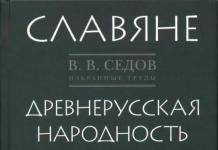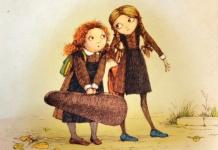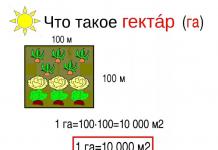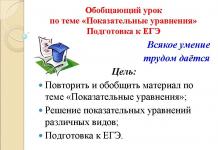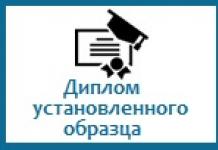Over the past few years, learning a foreign language has become not so much a way of self-development as a necessity. A foreign language has become a compulsory component of education not only in schools and universities, but also in many additional preschool institutions.
The demand for a foreign language in society, on the one hand, as well as the understanding by parents that language is not only a factor in the education of a modern person, but also the basis of his social and material well-being in society - on the other hand, at the moment make early learning a foreign language especially popular and relevant. If 20 years ago, knowledge of the language was required only in the work of some areas, but now knowledge of at least one foreign language is mandatory.
The main problem of teaching a foreign language is the age of the learner. It is known for certain that children are more amenable to learning. Until recently, the teaching methodology was aimed at school-age children, but now parents strive to start learning a foreign language as early as possible. The main goals in teaching preschoolers a foreign language are:
- the formation of primary communication skills in a foreign language in children;
- the ability to use a foreign language to achieve their goals, express thoughts and feelings in real-life communication situations;
- creating a positive attitude towards the further study of foreign languages;
- awakening interest in the life and culture of other countries.
Preschool age is especially favorable for the beginning of learning a foreign language: children of this age are distinguished by a special sensitivity to linguistic phenomena, they have an interest in understanding their speech experience, the "secrets" of the language. They easily and firmly memorize a small amount of linguistic material and reproduce it well. With age, these favorable factors lose their strength.
There is another reason why an early age is preferable for studying a foreign language. The younger the child, the less his vocabulary in his native language, but at the same time his speech needs are less: the spheres of communication in a small child are less than in an older child, he still does not have to solve complex communication problems. This means that, while mastering a foreign language, he does not feel such a huge gap between the possibilities in his native and foreign languages, and his feeling of success will be brighter than that of older children.
Teaching kids is a very difficult matter that requires a completely different methodological approach than teaching schoolchildren and adults. If an adult speaks a foreign language, this does not mean at all that he can teach others. Faced with methodically helpless lessons, children can acquire an aversion to a foreign language for a long time and lose faith in their abilities. Only experienced professionals should work with preschoolers.
At preschool age, when teaching English in children, there is a gradual development of the foundations of communicative competence, which at an early stage of learning English includes the following aspects:
- the ability to correctly repeat English words from a phonetic point of view after a teacher, native speaker or speaker, that is, the gradual formation of auditory attention, phonetic hearing and correct pronunciation;
- mastering, consolidation and activation of the English vocabulary;
- mastering a certain number of simple grammatical structures, building a coherent statement.
Methodology conducting direct educational activities should be built taking into account the age and individual characteristics of the structure of the linguistic abilities of children and be aimed at their development. Communication in a foreign language should be motivated and purposeful. It is necessary to create in the child a positive psychological attitude towards foreign language speech, and the way to create such a positive motivation is to play. Play is both a form of organization and a method of conducting classes in which children accumulate a certain stock of English vocabulary, memorize many poems, songs, counting rhymes, etc.
This form of conducting classes creates favorable conditions for mastering language skills and speech skills. The ability to rely on play activity allows you to provide natural motivation for speech in a foreign language, to make even the most elementary statements interesting and meaningful. Playing in teaching a foreign language does not oppose educational activity, but is organically linked to it.
Games in direct educational activities should not be episodic and isolated. An end-to-end play technique is needed that combines and integrates other activities in the process of language learning. The game methodology is based on the creation of an imaginary situation and the adoption by a child or teacher of a particular role.
Educational games are divided into situational, competitive, rhythmic-musical and artistic.
- TO situational include role-playing games that simulate communication situations on a particular occasion. Role-playing is a play activity during which children play certain roles, various life situations are played out, for example: a seller-buyer, a doctor-patient, an actor and his admirer, etc.
They, in turn, are divided into games of a reproductive nature, when children reproduce a typical, standard dialogue, applying it to a particular situation and improvisational games that require the use and modification of various models.
Standard dialogs For example:
- Show me (show me) - when the teacher names the subject, and the child must go to the card with the image of the desired word and point to it.
- What’s this? The teacher shows words, children name words.
- What’s missing? (what's missing)
- What’s doesn’t belong? (which is superfluous)
- "Magic Mirror" - the goal: the development of attention. Children in animal masks approach the mirror. Several animals are reflected in the magic mirror. Children need to be told who they see and how much. For example: I see a dog. I see five dogs.
Towards competitive includes most of the games that contribute to the acquisition of vocabulary and literacy. The winner in them is the one who has the best command of the language material.
These are all kinds of crosswords, "auctions", board-printed games with linguistic tasks, command execution. Crosswords can be on any topic: animals, fruits, vegetables, furniture, toys, etc. Commands are different. In the classroom, children can play the game: “Simon says” - the purpose of this game is to develop cognitive interests. Children stand next to the teacher. The task of the children is to follow the instructions of the teacher. For example: Hands up! Sit down! Jump! Run! Etc. In the course of this game, lexical material of various topics is used.
Rhythmic Music Games- these are all kinds of traditional games such as round dances, songs and dances with a choice of partners, which contribute not so much to mastering communication skills, but to improve the phonetic and rhythm-melodic aspects of speech and immersion in the spirit of the language, for example: "" Nuts and May "", "What's your name ”,“ I like my friends ”,“ Heard, shoulders, knees and toes ”, etc.
Artistic, or creative, games Is a type of activity that stands on the border of play and artistic creation, the path to which lies for the child through play. They, in turn, can be divided into
1. Dramatizations(ie staging small scenes in English) “In the forest” - for example: a chanterelle and a bear meet in the forest, and a little dialogue is played out (Hello! I’m fox. I can run. I like fish); "Little Red Riding Hood" and others.
2.Fine Games, such as graphic dictation, picture coloring, etc. Coloring pictures, it is a calming, not always informative, but very common activity. For example, you can show a finished picture. While the child is studying the outline, the teacher repeats the word many times, names the details. Thus, we will lay the foundation for how the new language is called what the child did himself. Graphic dictation- for example: in the classroom, children are told what color, the children paint, and then they compare the resulting images with the one according to which the teacher dictated.
3. Verbal and creative(collective composition of small fairy tales, selection of rhymes), for example:
Bunches of juicy hang
Ripens grape.
That would have matured sooner.
Grapes in English - grape.We rode on a swing
Ate cherry, that is, cherry.
On the border of situational improvisational games and creative dramatizations, there is such a type of activity as improvisation on the theme of a famous fairy tale, already played in an established form. For example, a game of "Turnip" or "Teremok", in which, depending on the number of players and the assimilation of new vocabulary, new characters and lines appear.
When choosing or coming up with a game to be included in the lesson, you must observe the following regulations:
- Before starting the game, answer the following questions: what is the purpose of the game, what should the child learn in it? What speech action should he perform? Does the child know how to construct such a statement, are there any additional difficulties?
- After answering these questions, try to transform yourself into a child and come up with an interesting situation in which a statement based on such a model could arise.
- Think about how to describe this situation to the child in such a way that he immediately accepts it ...
- Enjoy playing with your child yourself!
The game must be educational and it must be a game. The Soviet Encyclopedic Dictionary defines play as a type of unproductive activity, the motive of which lies not in its result, but in the process itself. This is a very important sign. Therefore, introducing a game in class, its didactic result is important for the teacher, but cannot be an incentive for the activities of children. Consequently, play should change the very style of relations between children and an adult teacher who cannot impose anything: a child can play only when he wants it and when it is interesting to him, and with those who make him sympathetic.
The teacher cannot only be the organizer of the game - he must play with the child, because children play with adults with great pleasure and because the game atmosphere is destroyed under the gaze of an outside observer.
And so, we can say that the basis of any game is role-playing. A child in a role-playing game can act as himself, an English child or an adult, a fairy-tale character or an animal, a revived object, etc. - the possibilities here are unlimited.
His partner can be another child, a teacher, a doll, an imaginary hero, an assistant actor or a second teacher who always plays the same role, etc.
Another one of the most popular methods of teaching a foreign language is use of information and communication methods such as computer hardware, multimedia, audio and more. The use of audio, video stories, fairy tales, cognitive material in direct educational activities contributes to the individualization of learning and the development of motivation for speech activity of preschoolers. It is the use of ICT in the direct educational activity of a foreign language that two types of motivation develop: self-motivation, when the proposed material is interesting in itself, and motivation, which is achieved by the fact that the preschooler will be shown that he can understand the language he is studying. This brings satisfaction and gives confidence in one's own strengths and a desire for further improvement.
It is much more interesting to listen to or watch a fairy tale, story or educational film, rather than a training program. Children very quickly grasp the semantic basis of the language and begin to speak on their own. All the more so if the full immersion method is used in training. This method implies regular and deep contact of the child with a foreign language. The child's subconscious is unusually sensitive, and even if a pronounced result is not visible now, then in a year or two it is quite possible to face the unusually developed linguistic abilities of the child.
Audio Tales for Learning English
When the preschooler's vocabulary reaches several dozen words, you can diversify direct educational activities with the help of audio fairy tales in English. Audio stories can be divided into:
- Pure audio stories. Audio stories are a great tool for children to learn English. For a start, tiny English stories are fine. For example, with children you can listen to such stories as "Three little kittens", "Three Little Pigs" or "Too Many Daves". It is extremely important that the essence of the audio story is clear, otherwise the child will quickly lose interest. And direct educational activity without interest will not be so fruitful and effective.
- Audio stories combined with illustrative material. In the course of the audio fairy tale, the children, together with the teacher, examine the pictures and at the same time pronounce the words.
- Audio stories and the "full immersion" method. To make listening to English audio fairy tales more interesting, you can use one of the methods of fairy tale therapy - drawing a fairy tale. But drawing while listening will work if the plot of the fairy tale is at least a little familiar to the child. Therefore, children are given pencils and paper when the tale is listened to for the second or third time. The fact is that drawing while listening is a process that affects the deep skills of simultaneous perception and reproduction of information. In the course of drawing, the child forms associative connections with what he heard. Voluntarily or involuntarily, foreign words are remembered, being associated with the plot depicted in the figure. Along the way, it is necessary to pay attention to whether he can simultaneously listen and draw what he hears. At four to five years of age, most babies do not have the skills to quickly reproduce the information they hear. But by the age of six, those children who regularly listen to and reproduce the information they just heard in the form of a retelling, drawing, application, etc., develop the ability to simultaneously listen, hear, understand and interpret what they have heard.
Videos for learning English
The purpose video film is the study of English by preschool and younger children using a communicative teaching method. The program material is interesting for the child, but at the same time educational. Children are included in the knowledge of the world around them, and, playing, they learn English.
Lexical and grammatical material is introduced in an entertaining way. Not only vocabulary is introduced, but also an action that can be performed with an object is clearly shown, which contributes to the rapid memorization of vocabulary and the development of elementary conversational skills in a foreign language. The presence of a native speaker contributes to the successful assimilation of phonetic material.
Cartoons in English - one of the best helpers in teaching English. Children love cartoons and enjoy watching them many times in a row. Therefore, cartoons in English help to solve many problems of teaching a foreign language to kids at once:
- the child does not have the question “why learn these words”;
- he is interested in watching a cartoon and enjoys repeating the characters' phrases;
- cartoons help the child not only learn and learn new words, but also master the sounds of English speech;
- repetition - if a child likes a cartoon, he is ready to watch the same cartoon over and over again until he learns it by heart.
Videos for teaching children a foreign language need to be specially selected; it is best to put the child animated songs and cartoons for kids, designed for the age of 2-3 years (for example, videos about Maisy Mouse). It will be much easier for a child to understand such cartoons - due to the availability of topics - account, names of animals, etc. and a calm pace.
In this way, the game Is a game oriented towards the zone of proximal development, combining a pedagogical goal with a motive of activity that is attractive to a child.
Bibliography.
- Astafieva M.D. Holidays for children learning English. - M .: Mosaika-Sintez, 2009.
- Galskova N.D. Nikitenko Z.N. Theory and practice of teaching foreign languages. Elementary school: methodical manual.-M .: Iris-press, 2004.
- Guseva L.P. We play, teach, master - we want to know English. - Rostov n / a: Phoenix, 2009.
- T.V. Zemchenkova English for preschoolers. - M .: VAKO, 2008.
- Ivanova M.V. English for kids. - M .: AST: Astrel, 2009.
- Trofimova G.S. Pedagogical foundations of teaching foreign languages (Subject didactics). - Izhevsk: publishing house of Udmurt University, 1999.
- Kozina S.V. Holidays for preschoolers in English. - M .: TC Sphere, 2008.
The methodology of pedagogical work is determined by the goals and objectives set by the teacher. From the point of view of I.L. Sholpo the main goals in teaching preschoolers a foreign language are: the formation of primary communication skills in a foreign language in children; the ability to use a foreign language to achieve their goals, express thoughts and feelings in real-life communication situations; creating a positive attitude towards the further study of foreign languages; awakening interest in the life and culture of other countries; education of active creative and emotional-aesthetic attitude to the word; development of linguistic abilities of students, taking into account the age characteristics of their structure in older preschoolers; personality decentering, that is, the ability to look at the world from different positions.
Methods of teaching English to preschoolers
The peculiarity of teaching English to preschoolers is that it is not just sitting at the table and flipping through books and notebooks. The process should not be boring, and the kids themselves should strive for knowledge. Children think concretely, understand everything literally, speak in simple sentences. If a teacher explains something, then he must use clarity, an example. That is why English for preschoolers is a game. Only through such a form can you achieve positive results and form a positive attitude towards a foreign language in a child.
Forms of education should be aimed not at mastering as many lexical units as possible, but at fostering interest in the subject, developing the child's communication skills, and the ability to express oneself. It is important to achieve certain qualities of mastery of the material, which should allow the child with a minimum of funds, assuming the subsequent growth of language units in the child's competence, to use them situationally and meaningfully.
From the very beginning of training, it is necessary to develop a certain style of work with children in English, to introduce a kind of rituals that correspond to the most typical situations of communication. Such rituals (greetings, goodbyes, short exercises, the use of courtesy formulas accepted in English) allow children to tune in to foreign language communication, facilitate the transition to English, show children that the lesson has begun, is over, that a certain stage of the lesson will now follow.
The most important condition for the success of training is the activation of the speech-thinking activity of children and their involvement in foreign language communication. It is necessary to constantly change the order of speech actions (the order of questions, addresses, names of objects, etc.) so that children react to the meaning of the word, and not memorize the sound sequence mechanically. When repeating games, it is imperative that different children be the leaders, active participants, so that at least once all the children perform the speech action provided for by the learning task.
In the learning process, a preschooler needs a frequent change of activity. During the lesson, the child is often distracted, not because he is not interested, just his brain gets tired. The best relaxation is physical exercises, of course, related to a foreign language, for relaxation. It can be a rhyme or just command execution. The lesson should not exceed 30 minutes.
The use of various sound and visual supports, for example: songs, children's video programs, thematic cards. The child enjoys working with such material, and all impressions and knowledge are formed in images, which he then embodies.
A classic lesson should include the following steps:
- 1. Introducing sounds. The best way is a tale about a tongue, tongue twisters, rhymes.
- 2. Introducing letters. Song "Merry Alphabet", thematic pictures.
- 3. Enter words. We start with separate splashes of words, for example, rhymes, cards.
- 4. Rest. Phys. a minute.
- 5. Phrases. Children want to speak more quickly in a “tempting and incomprehensible” language. All expressions should be simple, easy to remember. Before introducing the phrase, think over the game moment: “A doll has arrived from England, let's get to know her. But she does not know how to speak Russian, can we learn to speak English? "
Try to incorporate English phrases into regular communication. Always say "thank you", "please", "sit down", "Look", "Let" s play.
Many preschools use TPR to teach English to preschoolers based on total physical response. The main idea is that the child learns a foreign language in the same way as he learned his own. The teacher plays the role of a parent: he says words or simple phrases, such as “jump” or “look at the notebook,” and the children perform the actions. At the first stage, the emphasis is on the correct recognition of what was heard, after which the students themselves begin to speak commands to each other. They develop spontaneous speech skills. The physical and emotional part of the lesson improves the memorization of words. This technique is suitable for very young ages and beginners, but it can also spice up lessons with other techniques for older children.
Glen Doman's method
In Russia, the method of teaching English to preschoolers is popular, the author of which is Glen Doman. It is used both in kindergartens and various children's clubs, and by parents at home. Starting from 6-7 months, babies are shown cards with the image of words, while pronouncing a foreign word aloud. The child remembers the picture and learns new words with regular, but not prolonged, repeated viewing of the cards. Subsequently, it is effective to conduct games with different combinations of cards, show presentations. The child's role in learning according to the Glen Doman method is passive, but in this visual form it is not difficult for him to memorize new vocabulary.
Zaitsev's technique.
The next common technique is Nikolai Zaitsev. Suitable for both toddlers and older preschoolers. To teach younger children, the teacher (or parents) give them specially designed cubes with syllables to form words from them. Those. memorization takes place in a playful and visual form. The next level also uses cubes. The main idea is to make the algorithm for constructing sentences in English clear and simple. For each member of the sentence there is a certain color, and the child, having memorized the order of colors, say, for negative sentences, trains the words under dictation. This is not an easy task for children, but its effectiveness has been verified. Also, the methodology includes various manuals and tables, thanks to which the parents themselves can conduct lessons without any problems.
Design and combined methodology.
The project methodology of teaching English to preschoolers is suitable for 4-6 years old. The teacher chooses a topic that is interesting for children, a set of new words, phrases and a variety of tasks for practice. Each topic is given several lessons, at the end of the course, the students prepare creative work... Learning English using this method is versatile, children always learn something new.
The combined technique is most common due to the greatest effectiveness of such training. The teacher combines the methods and tasks of different methods, adding variety to the lessons and adapting the general curriculum according to the interests and abilities of the children.
Obviously, it is much more difficult to get children interested in learning than adults. For them, lessons need to be carried out dynamically, actively, so that their attention is constantly included and directed to the tasks. On these principles, a game technique has been created and is being practiced. The game is the most entertaining and favorite activity for little students. This technique can be adapted for all language levels, any age and characteristics of children. They are among toys, familiar things, with a friendly, active teacher. They teach to speak and understand English in a game and audio form, with the help of cartoons, songs, fairy tales, games and other activities. Materials and ideas can be developed in Russia as well as in the UK and USA.
The next, very important question that worries teachers is the question of the size of the group. Z. Ya. Futerman, speaking about foreign language classes in a kindergarten, insists on working with a whole group (25-30 people), citing the fact that children are accustomed to each other, as well as the greater efficiency of mass games in the learning process. An experiment was carried out by the teacher, which did not show an increase in the effectiveness of training in conditions of division into two subgroups. However, I.L. Sholpo questions these conclusions and writes that, perhaps in a kindergarten, the children's habit of each other is really so strong that it turns out to be a decisive factor, however, if we are talking about other structures where unfamiliar children are united in groups, then classes with a group 25 people turn out to be ineffective, and even 15 people in a group is a serious test for a teacher. Sholpo I.L. recommends forming groups of at least five and no more than ten people, explaining this by the fact that a general conversation, (as established by psychologists), organized joint activities are possible in a group of no more than 8 people. But, given the fact that in winter children are often sick and miss classes, you can recruit up to 10 people in a group.
The next controversial issue is the duration and frequency of classes. Z. Ya. Futerman argues that classes for five-year-olds should not last more than twenty minutes, but for children six years old, twenty-five. This statement is also based on the results of the experiment, however, I.L. Sholpo believes that his results are related to the previous condition: with a group of 25-30 people, neither the teacher nor the children are able to study longer. Work experience of E.I. Negnevitskaya in groups of 5 to 15 people and the experience of I.L. Sholpo in groups of 7-10 people show that with such a number of children, the duration of the lesson from thirty-five to forty-five minutes (depending on age) does not tire the children, and they still have that reluctance to leave, to complete the lesson, which, as is quite fair considers Z. Ya. Futerman, essential for effective teaching. It is only important to change the type of activity every five minutes, to move from an active game to a conversation at a round table; then - to dance, exercise; after that to singing a song, etc.
The usual frequency of classes, according to I.L. Sholpo - two to three times a week. Classes once a week are extremely unproductive, children have time to forget material that has not received reinforcement for so many days.
From the point of view of psychology and pedagogy, preschool age is the best time to start learning a foreign language. But such small students need a special approach, special methods. You can start at the age of 3 to teach children to use the language, and even earlier.
 English learning methods for children
English learning methods for children However, to teach English to children, certain principles must be followed:
- naturalness
- interestingness
- sequence
- persistence
- game form
There are also 2 main directions:
- Group lessons
- Learning English on your own
Whichever direction you choose, it is worth noting that the main factor in a child's successful language acquisition is constant communication in English. Therefore, try to speak English with him at home if you know the language a little.
Here are some methods for teaching English to children:
Nikolay Zaitsev's technique. In the process of learning, the child will have to look at tables and play with cubes. But Zaitsev's cubes are not ordinary ones with letters and pictures, but with warehouses (syllables), from which children form words. In addition, they vary in size, color, and ringing.

 Nikolay Zaitsev's technique It helps toddlers to feel the difference between voiced and soft, vowels and consonants. From the very first lessons, children learn to speak and read English at the same time. For children from 3 years old
Nikolay Zaitsev's technique It helps toddlers to feel the difference between voiced and soft, vowels and consonants. From the very first lessons, children learn to speak and read English at the same time. For children from 3 years old
Game method
Play technique. A simple and effective way. A professional teacher conducts classes with a child in a playful way. The teacher places toy animals and animals of different colors on the table, calls them several times, the children repeat in chorus. Then the children are invited to draw any animal of their choice and name whom they portrayed in English.
 Game method of learning English After the children remember at least half of the names, you can proceed to a simple dialogue. The teacher in English asks to give him an animal Give me a rabbit - Give me a rabbit. The child fulfills the request. Next time, you can start working on getting the child to ask for a toy.
Game method of learning English After the children remember at least half of the names, you can proceed to a simple dialogue. The teacher in English asks to give him an animal Give me a rabbit - Give me a rabbit. The child fulfills the request. Next time, you can start working on getting the child to ask for a toy.
You can gradually change items and increase their number. Speaking and pronunciation are developing. Spelling and grammar are trained. Adaptable for children from 1 year old
Doman's technique
Glen Doman's technique. Here the emphasis is on visual memory. Children are shown cards and tables with words for animals, toys, furniture. Pictures and words are memorized immediately, and the learning process is simplified. This method is designed for babies, but older children can also do it, up to 6 years.

 Thus, the ways of teaching English to children, as well as teaching it, are varied. You need to choose exactly the method that will be of interest to you and your children.
Thus, the ways of teaching English to children, as well as teaching it, are varied. You need to choose exactly the method that will be of interest to you and your children.
Also show the children cartoons, communicate with him more, take him to a kindergarten with a focus on learning a foreign language. You can hire a tutor who will speak to your child exclusively in English.
How do your children learn English? Do you know an interesting and effective technique? Please share in the comments.
Technique for reading English according to Zaitsev's method
Hiring an English nanny for a baby is an opportunity not only to solve the problems of caring for a child, but also to immerse him in the English environment from the first years of life. You can make learning for children from 4-5 years old interesting and productive thanks to lessons in a playful way with a native speaker. From the age of three, it is important for boys to lay the foundations of not only intellectual, but also physical and moral development. English tutors are able to help with this. Specialized recruitment agencies can help you find a suitable and proven specialist for the education and development of your child.English for toddlers: foreign language learning programs from childhood
For several decades now, English can be safely recognized as the language of global communication: it is used in all corners of the world for both business and informal communication. Therefore, many modern parents believe that children should be taught English from a very early age: so it will become like a "second native". Is it so? Is it worth teaching a child to speak a foreign language practically from the cradle? Who is better to hire as a teacher for a toddler? The answers to these questions are in our article.
First of all, it should be said that early childhood is divided into two conditional periods, in each of which the acquisition of a language (and of all information about the world) is characterized by its own characteristics. Until the age of three, the baby only accumulates vocabulary. At this stage, he can only perceive the speech sounding around, process it and reproduce it. In a word, until the age of three, only learning through immersion in the language environment is possible: if the child is surrounded by people who speak English, he will begin to speak English himself.
At about three years old, the so-called linguistic breakthrough occurs and a period of active development of the speaking skill begins. At preschool age, a child, like a sponge, absorbs more and more information. At the same time, he can already focus attention for some time, perseverance appears, the ability to think logically. Perhaps the most gratifying time to start a purposeful study of a foreign language. But, of course, not only by cramming the rules and identifying language patterns. How else?
Below we will talk about the methods and tools for teaching English to preschoolers.
On a note
If a baby is surrounded by people speaking different languages from birth, he will speak both equally well. Numerous scientific studies prove that bilinguals are particularly flexible in their thinking and creativity.
Methods for teaching kids English
Of the many methods that modern pedagogy offers, experienced teachers advise you to choose 1-3 and alternate them in the classroom. It is difficult to say which technique is more effective, it all depends on the child's individual ways of perceiving and memorizing information.
Zaitsev's technique
One of the most famous and widespread. It consists in teaching the kid to read and the ability to form words using special "grammatical" cubes and systematizing tables. Cubes of different colors are used: first, there is a study of letters and training in composing words, then sentences. The combination of vivid clarity and playful element makes the method an excellent solution for learning English with the youngest students. Zaitsev's method helps to build algorithms for applying the learned rules and teaches you to look for patterns in the classroom in other subjects.
Doman's technique
Although the Glen Doman method is applicable from infancy, learning English with it is especially effective from the age of 4. Special information cards are used, the content of which is shown to the child and at the same time spoken aloud. At first, the sessions are very short - a minute or two, but the material is repeated many times until the information is firmly entrenched. This method can be called "imprinting". When the child grows up, you can introduce game elements with cards, then show presentations, videos.
Game method
Perfectly suitable for preschoolers, while it can be adapted to any age. In games, you can learn both grammar and phonetics, and practice communication skills. The essence of the technique is clear from the name: all training takes place in a natural game process. Allocate games:
- Role-playing (situational). In these games, scenes are played out - models of real situations. They are divided into reproductive, that is, repetitive, and improvisational. In the first case, children imagine a typical situation and dialogue in it, in the second, they use a creative approach, coming up with their own scenario.
- Competitive is based on the principle of "who is better?" Who will guess the crossword faster? Who will compose the most interesting story? Who will execute all commands correctly? The encouragement to compete helps children to learn the material faster, to show more diligence in mastering grammar rules and speech practice.
- Creative. This type of activity develops not only language skills, but also artistic inclinations. There are several types of creative games:
- Word games - writing poems, songs, stories;
- Dramatic - staging first small scenes, then plays;
- Fine - coloring, drawing, graphic dictations.
- Musical. Learning songs, dances. The use of musical accompaniment helps to consolidate the rhythm of speech, to hear its melody, and physical activity and the possibility of communication diversify the learning process.
Design method
Suitable for children 5-6 years old. Children, together with the teacher, choose a topic for the project, complete assignments over several lessons, collect information, and engage a creative approach. In addition to linguistic content, projects teach the child independence, the ability to search for material and combine disparate knowledge into a logical chain.
Immersion in the language environment
Communication with the child takes place only in English. At first, classes can be very short, then as the skill develops, they are lengthened. It is useful to combine practice with everyday activities, for example: washing your face and having breakfast, commenting on actions, or discussing the past day while walking. Visual aids (cards, tables) can be used as an aid.
Combined technique
As the name suggests, in this method, at the discretion of the teacher, all the previous ones are mixed: from games to serious projects. The advantage of the approach is in its diversity and a wide range of tools for classes.
Lesson Tools for Preschoolers
If a textbook is enough for adults to study English, then the entertainment component of classes is very important for children: it not only helps to retain attention, but also makes learning the material more effective.
- Picture books. For the little ones - bright books with pictures, as well as with letters and words, for older children - with folk English songs, fairy tales, short stories. Illustrations will diversify the lesson, will not let you get bored, and will help to represent the written words figuratively.
- Phonics and phonetic games. Short videos, audio tracks, flashcards, tongue twisters - everything that will help you practice correct pronunciation.
- Cartoons in English. Muzzy, Baby Einstein, Super Why! .. The heroes of these cartoons will not only fall in love with the children with their adventures, but will also teach the basics of grammar, practice with the baby in pronunciation and phrases.
- Workbooks and copybooks. Big Red Bus, I love English- these teaching materials combine visibility and practice. Almost all workbooks are supplemented with audio materials. Using the tool will allow you to replenish your vocabulary, develop a creative approach to learning the language, train in writing, but it makes sense to use them with children 5-6 years old.
The judicious use of any tool will increase the interest of the little student and facilitate the format of the class.
Pros and cons of teaching kids a foreign language
Today's parents are increasingly trying to start the process of teaching their children as early as possible: they bring their babies to early development centers, sign up for additional classes or study at home, considering this to be beneficial for the further development of the child. At the same time, teaching a foreign language is one of the three most popular areas.
Indeed, teachers believe that learning a foreign language early has many advantages:
- gives new sources of information about the world around;
- promotes the development of communication skills;
- develops logical and spatial thinking;
- gives a broader concept of phonemic diversity;
- makes it easier to learn other subjects in the future;
- trains memory.
But don't forget about the pitfalls. It is very easy to overload a child at preschool age with information, which will affect not only the effectiveness of classes, but also further motivation. You also need to ensure that the baby does not replace the concepts of one language with another. And of course, it is important that the baby learns the correct pronunciation, and for this, learning "firsthand" will be an excellent solution.
Why is it important to learn a foreign language with a native speaker
Perhaps no one can teach English as well as the one for whom it is native. A native speaker teacher has the necessary vocabulary, knowledge of the necessary grammar rules, and an understanding of how best to build speech. The child will learn pronunciation and learn to speak English fluently by interacting with the teacher. But it is important to pay attention to the fact that the teacher has correct, clean pronunciation, without admixture of dialects and accent. It is also worth keeping an eye on the balance: communication in English should not prevail over communication in the native language, the ideal ratio is 50:50.
Early learning of the English language is a great way to give more knowledge about the world from childhood and to prepare the baby for a future life in a globalized world when language boundaries are blurring. But it is important that learning English is fun and does not interfere with normal child development. Hiring an English-speaking nanny in the family might be a smart decision.
English nanny - the first foreign language teacher for toddler
How to find qualified personnel who will become not only an assistant for parents, but also a teacher for a child, is answered by Valentin Grogol, an employee of the English Nanny company, the head of the department for the selection of nannies from England and France:
“An educator with knowledge of a foreign language is a great option for a family who wants to engage in language development of children from an early age. But the nanny, whose native language is English, is a real godsend. With its help, a child can grow up to be a real bilingual, who, moreover, has absorbed the cultural traditions and moral values of a people with a rich history.
But it is very difficult to find an employee with a pedagogical education, high qualifications and good recommendations on your own. Therefore, it is better to contact a specialized recruiting agency from abroad. For example, English Nanny has been mediating between foreign nannies, governesses, teachers and Russian families for over 30 years. All the personnel we have selected have passed all the necessary language and pedagogical tests, medical care courses, have a work permit and excellent letters of recommendation. We can help you invite a nanny to your home, who will become the first English teacher for the baby, and for older children, we will find a governess or tutor. With us, the task of finding a native speaker for teaching a child becomes easier. "
P.S. You can get acquainted with the services of the English Nanny agency at the company.
Wednesday, 28.03.2018
Editorial opinion
Do not forget that all foreign employees must have a criminal background check (CRB) document, as well as a certificate of English language proficiency and the right to teach (in the absence of an appropriate higher education).
Children's bilingualism is a complex topic. There are many theories, scientists have no consensus. One thing is for sure: the sooner a child starts to learn a second language, the easier he will learn it and the less effort it will take. That is why English for children is so popular now. But let's get some theory first.
Bilingualism is divided into two types. Children's bilingualism ("congenital") and bilingualism in cases where the second language is learned after more or less decent mastery of the first. Let's call him an adult (although we can also talk about childhood). Some studies show that in the case of "innate" bilingualism, the brain learns two languages as two DIFFERENT language systems. In the case of adult bilingualism, the language system is ONE. That is, by a certain moment we already know our native language, and we perceive the foreign language as a set of synonyms for it and additional rules.
Features of "innate" bilingualism
A huge plus of "innate" bilingualism is that the second language is acquired automatically, and even the brain, according to some studies, remains in working order longer. But in the first years of life, a child can mix languages. There is no particular problem in this, but when communicating with those who do not know one of the languages, difficulties can arise. On the other hand, children may generally be silent or babble in a made-up language: this does not at all prevent them from playing with their peers and going to kindergarten.
But a little later, such a bilingual does not confuse the grammar of different languages. Using a specific language, it seems to be in a separate language system, only that part of the brain that is responsible for it is active.
The disadvantages of children's bilingualism include speech delay (it is logical: a child needs to learn twice as much material, it takes time) and mental problems. And one should feel sorry for the unfortunate inhabitants of states where several languages are official at once, and children from birth find themselves in a multilingual environment. Switzerland especially - with its four state languages. But for some reason I envy these poor people.
Features of adult bilingualism
In the case of adult bilingualism, grammatical errors are more common in speech. They are associated with an attempt to apply the rules of the native language to the foreign one. And if in the Russian language there is no one hundred percent analogue of any part of speech from English, then at thirty you will be fighting with these damn articles. But initially there is no confusion in vocabulary: a person clearly distinguishes between two languages.
0 to 1 year
If you decide to study English with your child from birth, then the set of methods you have is very limited. Yes, and "to engage" - it is loudly said. In the first year of life, a child, of course, assimilates a huge amount of information, including grammar and vocabulary of his native language (he will begin to apply all this later). But it happens naturally. He only knows how to listen and watch. So you also have a small choice: speak and show the world around you. And do not try to be a "translator": name the subject in Russian, and immediately after that - in English. You in your life do not say "I'll drink tea - tea", it's unnatural. The entire phrase must be either in English or Russian.
1. A family member always speaks English to the child.
Feature: if you are not a native speaker, although you are fluent in it, then when you switch to English you become a slightly different person. Psychologists study this phenomenon of “split personality” among professional translators. And they have a version that in such a situation the connection between the child and the parent is worse. After all, this is no longer a "real" mother, but her Anglo-American version.
But if mom, dad, grandparents are native speakers, you're in luck! Alternatively, you can hire an English-speaking nanny (but this often seriously hits the budget).
2. The whole family speaks a foreign language on a specific day of the week or in a specific situation.
For example, you can enter the tradition of English Saturdays / Sundays. Or speak English only while swimming / only in the evening / just for a walk in the park. There is also a drawback. For example, if you always speak English while eating, the child will not recognize the Russian names of the products. On the other hand, it is more important for him now to feel a different grammatical structure, to get used to the sound of the language, to look at your articulation.
3. English is spoken in a specific location.
For example, in developmental groups, visiting specific friends who agreed to learn English with you, in a cafe, etc. This method seems to me even simpler, but it requires regular visits to the chosen place.
From one to three

But let's be honest. All that the overwhelming majority of mothers of children of the first year of life want is to sleep and wash. Not everyone had the opportunity to teach English to children from scratch, and there is nothing terrible in this, the whole life is ahead. In addition to all of the above methods that are suitable for children after a year, you can use:
1. Play method: lay out toys and objects in front of the child, name them in English, play with them, draw them, often repeating their names.
When the child has mastered at least half of the words, you can start using them in speech and build a simple dialogue in English. It is important to move on to dialogues here. Otherwise, you will simply teach your child English synonyms, not English.
2. Cards with pictures and names (Doman's technique).
The idea is very vaguely similar to the previous one, but instead of objects, you have cards that you show repeatedly. As a rule, children look at any pictures with pleasure. But again, don't forget about the dialogues!
Well, it is worth mentioning that Mr. Glenn Doman was engaged in babies with developmental delay. And then, based on his experience, he created methods for the rest (within the framework of them, for example, children learn mathematics already a year). Whether this method is right for you also depends on how you feel about early development in general.
This is a whole system with posters, audio recordings and cubes of different masses, colors and sizes, on which syllables are written.






